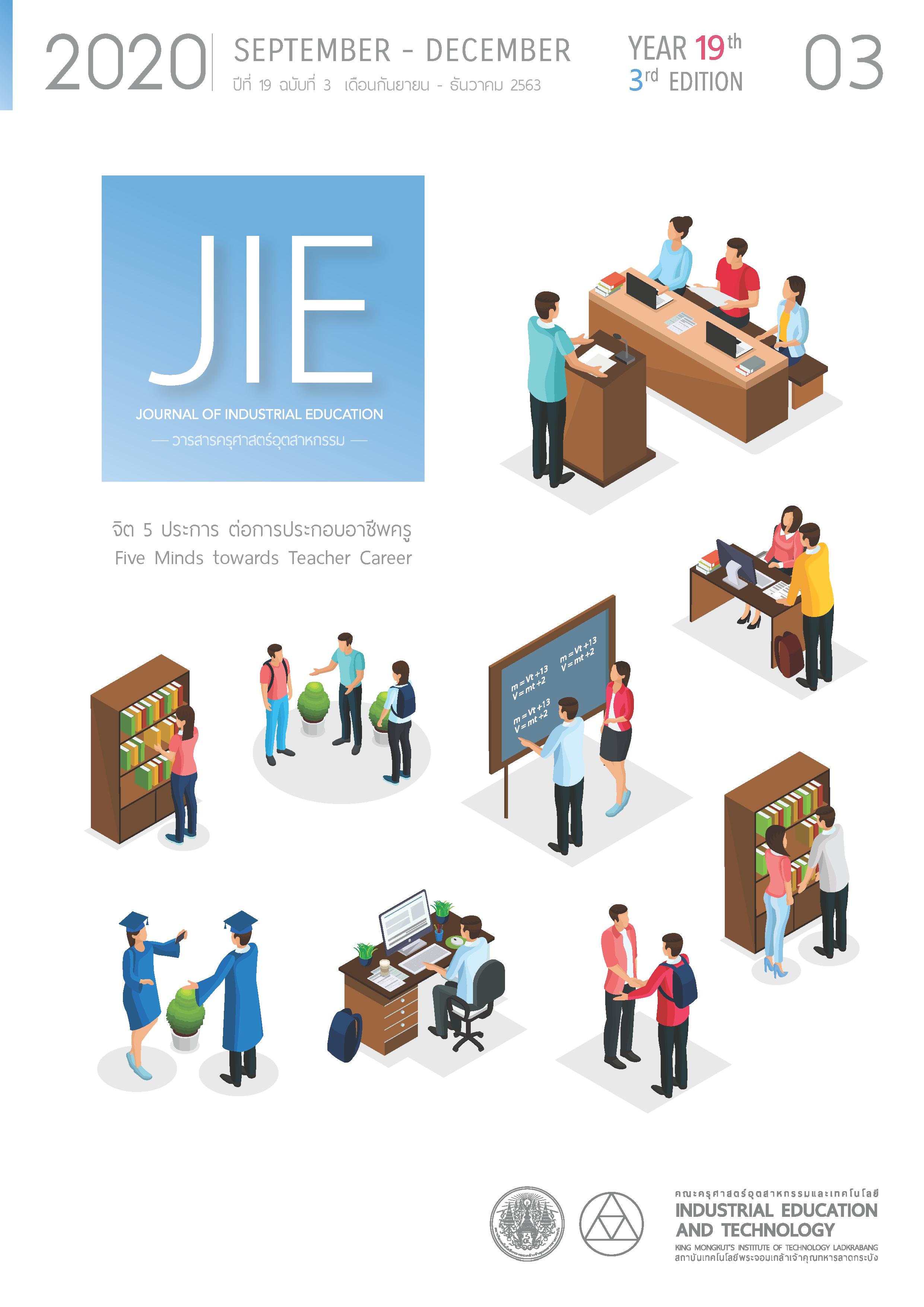STUDY OF SELF-RELIANT HOUSE: A CASE STUDY OF BANGKO
Keywords:
Self-reliant house, Sustainable house, Sufficiency economy house, Urban agricultureAbstract
This research aims to demonstrate a self-reliant home based on the sufficiency economy concept that can be located within a city with limited space such as Bangkok. The demonstration house was located in Kasetsart University, which was constructed from a container module with wall insulation (sandwich panel) and use natural ventilation to reduce energy consumption. In addition, a 1.2 kW poly-crystalline silicon photovoltaic system connected to the Metropolitan Electricity Authority grid to produce electricity. Vegetables such as Chinese cabbage, morning glory, green lettuce, lettuce, and mushrooms were grown for consumption and sale. Preliminary data such as temperature, electric generated from renewable sources were collected and simulated for further development of a self-reliant house based on the sufficiency economy concept.
From data collection, electricity generated from photovoltaic system can accommodate all appliances without needs of electricity from the grid. Furthermore, agricultural products around the house were grown enough for daily consumption and can be sold with slight incomes. For the thermal comfort, the house was too hot in daytime. The temperature can reach maximum at 38oC due to the high solar radiation, which the lack of an air conditioning system was not installed in this house. However, this house was cooled down into the thermal comfort range at 25oC in the evening, which a solar battery fan and exhaust fan can be used to improve nocturnal comfort and indoor air ventilation. Form every aspect studied in this research, it can be concluded that a self-reliant home is possible to build and live even in the confine space such as Bangkok area.
References
Brundtland, G.H., Khalid, M., Agnelli, S., Al-Athel, S. & Chidzero, B.J.N.Y. (1987). Our common future. New York, 8.
Lenssen, N. and Roodman, D.M. (1995). Making better buildings. State of the World, 6.
Oke, T.R., Johnson, G.T., Steyn, D.G. & Watson, I.D. (1991). Simulation of surface urban heat islands under ‘ideal’conditions at night part 2: Diagnosis of causation. Boundary-Layer Meteorology, 56(4), 339-358.
Santamouris, M., Papanikolaou, N., Livada, I., Koronakis, I., Georgakis, C., Argiriou, A. … Assimakopoulos, D.N. (2001). On the impact of urban climate on the energy consumption of buildings. Solar energy, 70(3), 201-216.
Olgyay, V. (2015). Design with climate: bioclimatic approach to architectural regionalism-new and expanded edition. Princeton university press, 14-23.
Zaki, W.M., Nawawi, A.H. & Ahmad, S.S. (2008). Energy savings benefit from passive architecture. Journal of Sustainable Development, Canada Centre of Science and Education, 1(3), 51-63.
Dylewski, R. & Adamczyk, J. (2011). Economic and environmental benefits of thermal insulation of building external walls. Building and Environment, 46(12), 2615-2623.
Marszal, A.J., Heiselberg, P., Bourrelle, J.S., Musall, E., Voss, K., Sartori, I., … Napolitano, A. (2011). Zero Energy Building–A review of definitions and calculation methodologies. Energy and buildings, 43(4), 971-979.
Chaiwat, T., Mai-Ngam, N., Dumchuen, N., Amesbutr, J., Thana, P., … Chaisrilak, C. (2020). Behavioral Economics on Life journey and Collective Action of Thai Household under COVID-19 Situation. Health Systems Research Institute (HSRI). [Online]. Available https://kb.hsri.or.th/dspace/handle/11228/5233 Retrieved Nov 25, 2020. (in Thai)
Chumtakhob, D. (2020). The Sufficiency economy alternatives Survival in the Crisis of Covid-19. Journal of Multidisciplinary Academic Research and Development (JMARD). 2, 3 (Sep. 2020), 11-22. (in Thai)
Panyakaew, S. & Yimproyoon, C. (2015). Professional Practice guideline: The design of electrical system from solar energy for buildings in Thailand. Vol. 1. The Association of Siamese Architects under the Royal Patronage, 1-207. (in Thai)
Rangsiraksa, P. (2006). September. Thermal comfort in Bangkok residential buildings, Thailand. In Proceedings of the PLEA2006 23rd Conference on Passive and Low Energy Architecture, Geneva, Switzerland, 6-8.
Bhikhoo, N., Hashemi, A. & Cruickshank, H. (2017). Improving thermal comfort of low-income housing in Thailand through passive design strategies. Sustainability, 9(8), 1440.
Naipinit, A., Sakolnakorn, T.P.N. & Kroeksakul, P. (2014). Sufficiency economy for social and environmental sustainability: A case study of four villages in rural Thailand. Asian Social Science, 10(2), 102. (in Thai)
Downloads
Published
How to Cite
Issue
Section
License
"The opinions and contents including the words in papers are responsibility by the authors."
"ข้อคิดเห็น เนื้อหา รวมทั้งการใช้ภาษาในบทความถือเป็นความรับผิดชอบของผู้เขียน"



